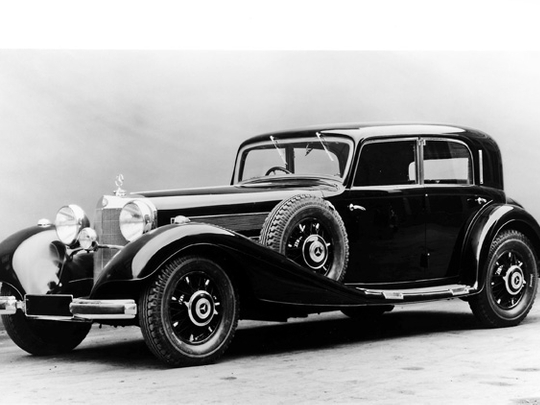
There's no doubting the significance of the great Ferdinand Porsche's contributions to Mercedes-Benz before leaving to found his own company. And there's none more significant than the mighty SSK, which was driven to victory at several Grands Prix in the period between 1929 and 1931 and helped boost Merc's sporting image. But the best times for the German marque as a high-end luxury carmaker began after Porsche left and Hans Nibel, the man behind icons such as the 1910 Benz 6/14 hp, the Blitzen-Benz and the Grand Mercedes 770, took over as technical director.
Although the Mercedes-Benz 540K was revealed at the Paris Motor Show in 1936, two years after Nibel died of a heart attack, it was a natural progression of the remarkable 380K and the 500K which were commissioned by him as spiritual successors to the SSK. For the 540K, the 500K's chassis was upgraded by engineer Gustav Rohr who was also responsible for Stuttgart's Grand Prix cars. Its four-wheel independent suspension featured twin parallel wishbones in the front and swing arms out back. The 540K was considerably longer than the 500K with a longer wheelbase that extended the bonnet. In fact, the bonnet was so long that it constituted at least half of the car's length, leading many to consider the 540K as the ultimate embodiment of the classic car shape. And underneath it was a 5.4-litre inline-eight engine, which featured a gear-driven, Roots-type supercharger (Kompressor) that spooled up on demand bumping up the power from 115bhp to 180bhp taking the three-tonner to an astounding top speed of 170kph. A deadly combination of its race-proven supercharging technology with arguably the most gorgeous coachwork of the pre-war era, the 540K soon became the epitome of Mercedes-Benz luxury.
Naturally then, the 540K was not a car for the ordinary man. Each of these was specially built to customer specifications. And most of the spectacular bodyworks was done by Mercedes-Benz's own Karosserie Sindelfingen, with a handful of special bodies also built. The gracefully flowing lines of the 540K, with its long bonnet, raked windscreen and sweeping fenders made it a phenomenal example of harmony and proportion.
There were a handful of body types available, but the most special of these was the Special Roadster penned by Hermann Ahrens. Only a handful of these marvellous roadsters were built, making them some of the most sought after and expensive vintage cars around. So in the extremely unlikely event of you stumbling upon one of these, be prepared to pay anything in the range of $1 million with some examples commanding a lot more depending on their condition, and more importantly their history and previous owners.











